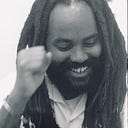Member-only story
Abolition for the People
From One Struggle to Another: Lessons From the First Abolition Movement
When people came together in the 19th century to oppose the expanding slave system, they were considered an aberration — but the course they charted continues to this day
This article is part of Abolition for the People, a series brought to you by a partnership between Kaepernick Publishing and LEVEL, a Medium publication for and about the lives of Black and Brown men.
In 1981, Black Panther Party member Mumia Abu-Jamal was sentenced to death by a “hanging judge” for the killing of a white police officer in Philadelphia. In 2000, Amnesty International found that the case “was irredeemably tainted by politics and race and failed to meet international fair trial standards.” Mumia forms part of the generation of Black radicals on whom the state tested law-and- order propaganda and lockdown in the ’60s — a prelude to the carceral repression it would deploy against poor Black and Brown urban communities in the 1980s and 1990s. On death row, Mumia became a writer of great literary power, and we are pleased to present this piece as part of Abolition for the People.

